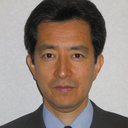Osteoclasts are not activated in middle ear cholesteatoma.
الكلمات الدالة
نبذة مختصرة
It is unclear whether osteoclasts are present and activated in cholesteatomas. We explored the expression of messenger RNA (mRNA) for osteoclast biomarkers and regulating factors in middle ear cholesteatomas to elucidate the level of osteoclast activity in this disease. Bone powder was collected from 14 patients with cholesteatomatous and noncholesteatomatous chronic otitis media during tympanomastoidectomy, separately from cortical bone of the mastoid (clean bone powder), from bone neighboring cholesteatoma (cholesteatomatous bone powder), and from bone of the air cells and antrum of noncholesteatomatous chronic otitis media patients (noncholesteatomatous bone powder). The samples collected were soaked in TRIzol reagent, and total RNA was extracted and purified by the acid guanidinium thiocyanate-phenol-chloroform method, followed by the use of magnetic bead technology. The sample was then subjected to quantitative reverse transcription polymerase chain reaction for receptor activator of nuclear factor κB (RANK), tartrate-resistant acid phosphatase (TRAP), cathepsin K (CTSK), osteoclast-associated receptor (OSCAR), calcitonin receptor (CALCR), matrix metalloproteinase 9 (MMP9), receptor activator of nuclear factor κB ligand (RANKL), and osteoprotegerin (OPG). There was no significant difference in the expression of TRAP, CTSK, OSCAR, CALCR, MMP9, or OPG among the clean, cholesteatomatous, and noncholesteatomatous bone powder. On the other hand, the expression of RANK and RANKL was significantly lower in the cholesteatomatous bone powder than in the noncholesteatomatous bone powder (P = 0.003 and P = 0.028, respectively). The RANKL mRNA/OPG mRNA ratio did not differ among the three samples. These results indicate that osteoclasts are unlikely to be activated in cholesteatomas. Bone resorption mechanisms not mediated by osteoclasts may need to be reappraised in cholesteatoma research in future studies.



